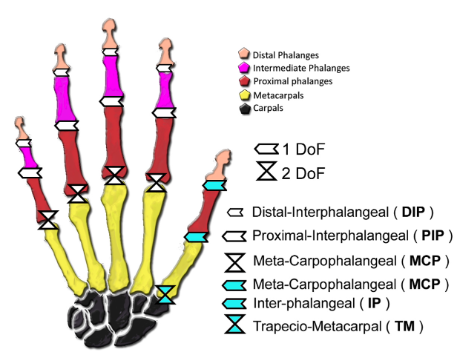DOI: http://dx.doi.org/10.3390/s21082667

Abstract
Smart gloves have been under development during the last 40 years to support human-computer interaction based on hand and finger movement. Despite the many devoted efforts and the multiple advances in related areas, these devices have not become mainstream yet. Nevertheless, during recent years, new devices with improved features have appeared, being used for research purposes too. This paper provides a review of current commercial smart gloves focusing on three main capabilities: (i) hand and finger pose estimation and motion tracking, (ii) kinesthetic feedback, and (iii) tactile feedback. For the first capability, a detailed reference model of the hand and finger basic movements (known as degrees of freedom) is proposed. Based on the PRISMA guidelines for systematic reviews for the period 2015–2021, 24 commercial smart gloves have been identified, while many others have been discarded because they did not meet the inclusion criteria: currently active commercial and fully portable smart gloves providing some of the three main capabilities for the whole hand. The paper reviews the technologies involved, main applications and it discusses about the current state of development. Reference models to support end users and researchers comparing and selecting the most appropriate devices are identified as a key need.
Keywords
Smart gloves; hand and finger pose estimation and motion tracking; haptic feedback; kinesthetic feedback; tactile feedback; extended reality.
